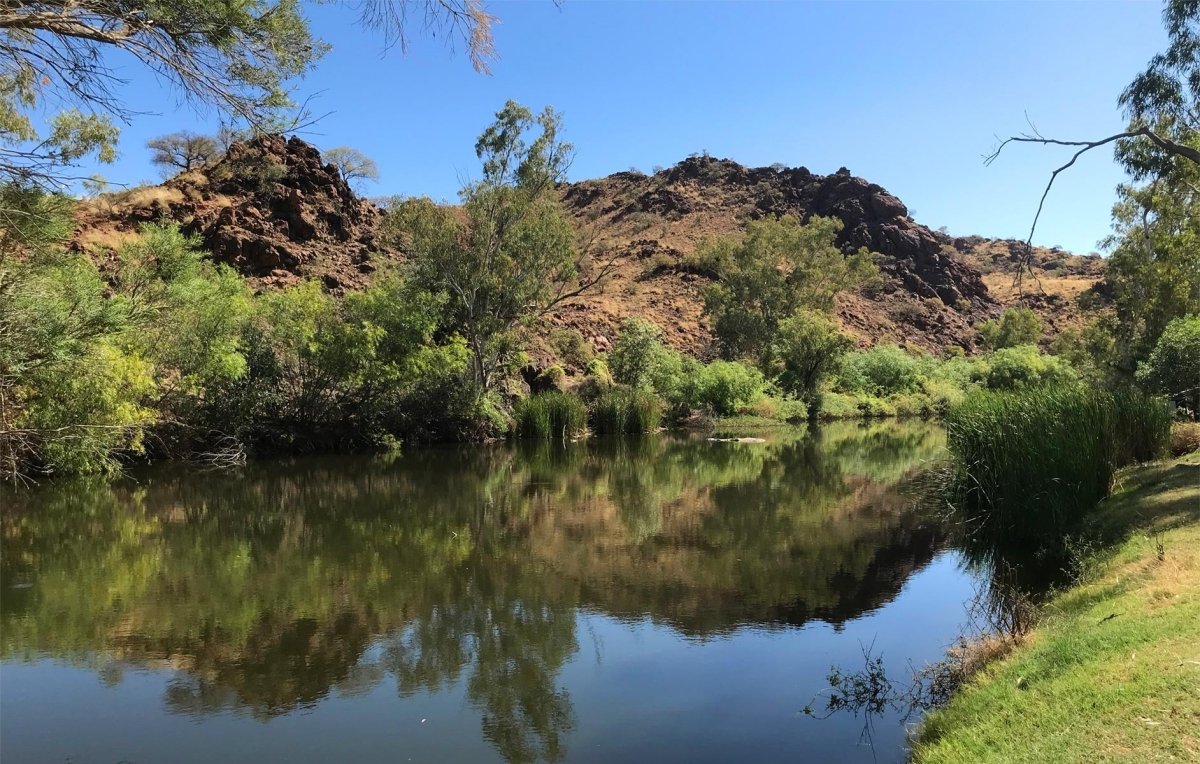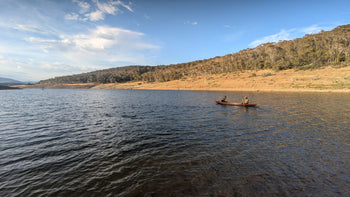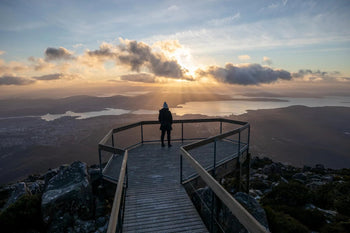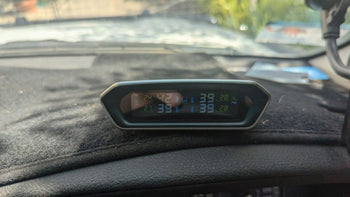

Welcome to the second state/territory in our free and budget camping spots series — this time we’re covering sunny Queensland. But the offerings and variety are huge, so we’re bringing this to you in three parts, of which this is the third.
In the second part of Queensland’s best free and budget camping spots we covered Queensland Country region’s Mulgowie Hall and Recreation Reserve, Bundaberg region’s AAOK Riverdale Caravan Park, Capricorn region’s Tasman Holiday Parks - Fisherman’s Beach and Townsville Region’s Charters Towers Tourist Park, Macrossan Reserve Camping Ground and Bivouac Junction Holiday Camp. If you missed it, check it out here.
In this third part (and final part in the Queensland set), we’re continuing with more Queensland camping options that won’t bust the budget.
Bush camping
*FREEBIE* Corella Dam/Clem Walton Park, Outback Queensland region

This is Burke and Wills country (on 22 January 1861 the expedition crossed the spot where today the Barkly Highway crosses the Corella River).
The free camping on the lakeshore of Corella Dam or along the Corella Creek in Clem Walton Park (below the dam wall) is hard to beat. It has the ‘three Ws’ that always seem to make bush camping all the better: water, wildlife and wildflowers.
The turnoff is roughly halfway (give or take 10km or so) along the Barkly Highway between The Curry and The Isa, being the local nicknames for Cloncurry and Mount Isa. The locale is enveloped by cattle stations, therefore leave all gates the way you found them.
After driving across the dam spillway, you’ll reach the gate signed ‘TIMBURU STATION PLEASE SHUT GATE’, and you’ll know that you’re a touch more than 1.5km away from the beautiful tree-lined camping area at Clem Walton Park.
This is not a place for large caravans but rather for smaller vans and camper trailers. Sure, you may well be able to get your large van along this track, but if there’s another vehicle coming the other way you may well be reversing for up to 1.5km as there’s nowhere to turn around.
The toilets and picnic tables are old, but sufficient. The Clem Walton naming comes from when the Clem Walton Dam was built in the 1950s to create Lake Corella and supply water for the uranium mining town of Mary Kathleen (since closed in 1982). It was taxi driver by trade and amateur prospector by hobby, Clem Walton, who discovered uranium around these parts (along with Norm McConachy). The mining area was named Mary Kathleen in honour of Walton’s deceased wife. The Clem Walton camping area was established in the 1950s as a picnic area for the residents of Mary Kathleen township.
Big rigs should stick to Corella Dam, where you’ll need to be 100 per cent self-sufficient for food, fire, shelter (including shade), potable water, toilets and rubbish disposal. The nearest shops and fuel are in Cloncurry, more than 50km away. Mount Isa’s shops and service stations are almost 70km away.

And that means that if you run out of ice it’s at least a 100km round trip to buy more of it. It gets hot in these parts. Very hot.
Signs on both Flinders Highway approaches to Cloncurry depict a thermometer and a temperature of 53.1°C / 127.5°F, and each sign states:
CLONCURRY
AUSTRALIA’S HIGHEST TEMPERATURE
16 TH JANUARY 1889
A WARM WELCOME
GUARANTEED
The signage makes for a good photo opportunity, and you might think that your photos would be a nice addition to your social media pages or travel journal as evidence that you have visited the location of Australia’s highest temperature.
Except that, unless you have visited Oodnadatta and/or Onslow (both of which, having recorded 50.7°C [2 January 1960 at Oodnadatta Airport and 13 January 2022 for Onslow Airport], hold the equal hottest temperature officially, according to the Bureau of Meteorology), you haven’t.
Why? Because that temperature reading on 16 January 1889 was taken in beer crate nailed to the side of a house, not in the official measuring device (a Stevenson Screen).
‘The Curry’ is an apt nickname indeed, so hot does it get. Almost any day of the year is warm enough to go for a splash in Corella Dam. Yes, there are crocodiles, but they are freshwater crocs, and they tend to steer clear of the camping areas. Steer clear of the freshies, and they will likely steer clear of you.
At Corella Dam and Clem Walton Park you will experience birdlife in abundance, taking a sip, taking a dip or looking for food. Combined, more than 140 species have been recorded here, including several colourful and/or distinctive ones, including one of the four sub-species of Australian Ringneck, Cloncurry’s very own Cloncurry Parrot (Barnardius zonarius macgillivrayi).
If you feel like a break from relaxing, swimming, boating, birdwatching, fishing, campfire cooking, reading a book and/or taking photographs of the sunsets, be sure to visit the abandoned uranium mining town of Mary Kathleen (once home to 1000 people) and take in the gorgeous colours of the old mine pit. The gorgeous blue water looks inviting, however swimming in the waters of a radioactive mine is not advisable.
Another fabulous side-trip from Corella Dam is the 4WD Mining Heritage Trail in the Argylla Range. The Mining Heritage Trail (Fountain Springs Road turnoff) is only a couple of hundred metres from the Fountain Springs Rest Area (maximum stay of 20 hours) on the opposite side of the Barkly Highway, roughly halfway between Mt Isa and Cloncurry. Your bounty after your dusty drive in, is a refreshing dip in the permanent waterhole of Fountain Springs, against a spectacular backdrop. If you watched Australian Survivor: Brains Vs. Brawn and thought that you wouldn’t mind being banished to the oasis of ‘Redemption Rock’, well now you can. ‘Redemption Rock’ is…. you guessed it…Fountain Springs.
Contact the Cloncurry Unearthed Visitor Information Centre & Museum for more information.

*FREEBIE* Lake Elphinstone, Mackay region
Any camping area which is free of charge, doesn’t require booking, has flushing toilets, showers, picnic tables and wood barbecues, is located on the shoreline of a natural body of water and happens to be a haven for avifauna, gets our vote.
This unpowered camping area gets extra points from us for its oft-sublime sunsets over the water.
You’ll need to bring your own firewood and your own potable water. And if you stay for the permissible duration (a very generous 14 days, courtesy of Isaac Regional Council), you may want to consider bringing with you a generous amount of potable water, gas, firewood and food supplies, since the nearest shops are a fair distance away.
Contact the Isaac Regional Council for more information.

Lake Broadwater Conservation Park, Queensland Country region
On the banks of the serene Lake Broadwater, the Lake Broadwater camping area has sites for car camping, campervans, camper trailers and caravans, as well as flushing toilets, cold showers, a boat ramp, sheltered picnic tables, non-potable water and a woodfired barbecue / fire ring. The other camping area nearby is Wilga Bush camping area which is a notch over 2km away along the Red gum walking track and the Wilga campground track. Wilga can accommodate car camping, campervans, camper trailers and caravans also (accessible from Broadwater Road) however the only facilities here are pit toilets, woodfired barbecue and sheltered picnic table.
Outside of fire bans you can have a fire however as this is a gazetted conservation park you will need to bring all your own firewood. Your pets are not permitted to join you at these camping areas since they are both located within the conservation park. While the Lake Broadwater Conservation Park is managed by Queensland Parks & Wildlife Service (QPWS), the camping areas and their facilities are maintained and managed by the Western Downs Regional Council, and camping fees apply, being $7.25 per person per night or $29 per family per night). Maximum stay is 14 nights.
All enquiries about camping at either Wilga Bush camping area or Lake Broadwater camping area should be directed to the Western Downs Regional Council by emailing info@wdrc.qld.gov.au or by phoning the Dalby Customer Service Centre on 1300 268 624 (07 4679 4000 if calling from outside Queensland) or the local Caretaker of the Lake Broadwater Conservation Park on 0428 229 282.
Be cautious not to accidentally book the similarly named Broadwater camping area or Broadwater Waterhole camping area via the QPWS website; the former is located in Abergowrie State Forest near Hinchinbrook Island in the Townsville region and the latter is located between Longreach and Windorah in Outback Queensland!
Rest areas
We include this section with the caveat that Rest Areas exist to help manage driver fatigue, not drive when tired and in doing so, hopefully not add your number to the road toll. Here at A247, we acknowledge that Rest Areas are not camping areas.
You can pull up your general vehicle and recreational vehicle at a motorist rest area or a combined motorist and heavy vehicle rest area in Queensland and stop there to rest (not camp) for up to 20 hours in any four-week period unless the signage reads otherwise (‘No overnight camping. Penalties apply’). Be sure not to stop in any heavy vehicle rest areas; these are exclusively for commercial heavy vehicles (and no, your motorhome does not count) and it is illegal for general and recreational vehicles to use them.
If you are looking for somewhere to set up for multiple nights, don’t do so in a Rest Area. It is neither designed to be, nor is it capable of being, a camping area or a caravan park.
*FREEBIE* Bluewater Park Rest Area, Townsville region

This one isn’t a Queensland Department of Transport and Main Roads (TMR) Rest Area; however, it is a vehicle-only area that does allow free camping (thanks to Townsville City Council’s forward-thinking RV and Camping Strategy) and is one of the best free camping spots in North Queensland.
Located 29km north-west of Townsville along the Bruce Highway and adjacent to the Bluewater Park Cricket Field, this free overnight rest area (replete with toilet facilities, picnic areas, rubbish bins and dump point) is a vehicle-only camping area. Camping in tents is permitted, however your tent will need to be carried in your vehicle, not your hiking backpack since walk-in camping is not permitted.
Bluewater Park sites must be pre-booked online via the Townsville City Council. The maximum duration of stay is 48 hours, once per week. Anyone who doesn’t move on within 48 hours, will be moved on. Bluewater Park is particularly popular with grey nomads heading further north to the Tropical North Queensland region.
Contact the Townsville City Council for more information.
*FREEBIE* Boyne River Rest Area, Gladstone region

This Rest Area managed by TMR, which means that you are allowed to pull up and rest (not camp) for up to 20 hours in any four-week period, free of charge, is Boyne River Rest Area. Located along the Bruce Highway a touch shy of 275km north of Hervey Bay and on the eastern banks of the Boyne River on the outskirts of the small town of Beneraby, this free overnight rest area is under a 25km drive south of Gladstone.
While traffic noise from the Boyne River Bridge on the Bruce Highway (capped off with very persistent mozzies) seems to be ganging up against you to ensure that this is a fair way shy of being a perfect location, the sunset views across the river are nevertheless pretty close to perfect.
With plenty of space, this Rest Area is accessible to conventional vehicles, camper trailers, campervans, caravans and motorhomes. Try and grab a shady spot under the trees if you can, as the rising sun will work its magic on the temperature of your van, camper or tent well before you might want it to. There are sheltered picnic tables with benches, wheelchair accessible toilets, cold showers and a dump point. Not far over the other side of the bridge is a service station (Ampol Foodary Benaraby Travel Centre) which is open 24 hours.
It would be a shame to be so close to Lake Awoonga and not spend at least a couple of days there if you are in any way interested in bushwalking (two walking tracks), kayaking, boating, birdwatching (almost a quarter of Australia’s native bird species can be found around here), swimming and/or fishing.
Base yourself at Lake Awoonga Caravan Park, located within the Lake Awoonga Recreation Area. This beautiful and serene park is situated within a wildlife sanctuary and therefore pets are not permitted. Unpowered sites (swags or tents only) start from $30 per night for two adults (twin share), plus $10 per night per additional adult and $5 per night per child. Powered sites (reverse in only; no drive-through sites) start from $40 per night for two adults (twin share). The fees per additional adult and child are the same as for the unpowered sites. A maximum of six people per site (both unpowered and powered) applies.
The park has communal fire pits, two camp kitchens and a laundry. Managed by the Gladstone Area Water Board, the Lake Awoonga Recreation Area has a boat ramp and two recreation areas with toilets, sheltered picnic, barbecue areas and fireplaces.
Visit lakeawoongacaravanpark.com.au/ or phone 07 4975 0155 for more information and bookings.



